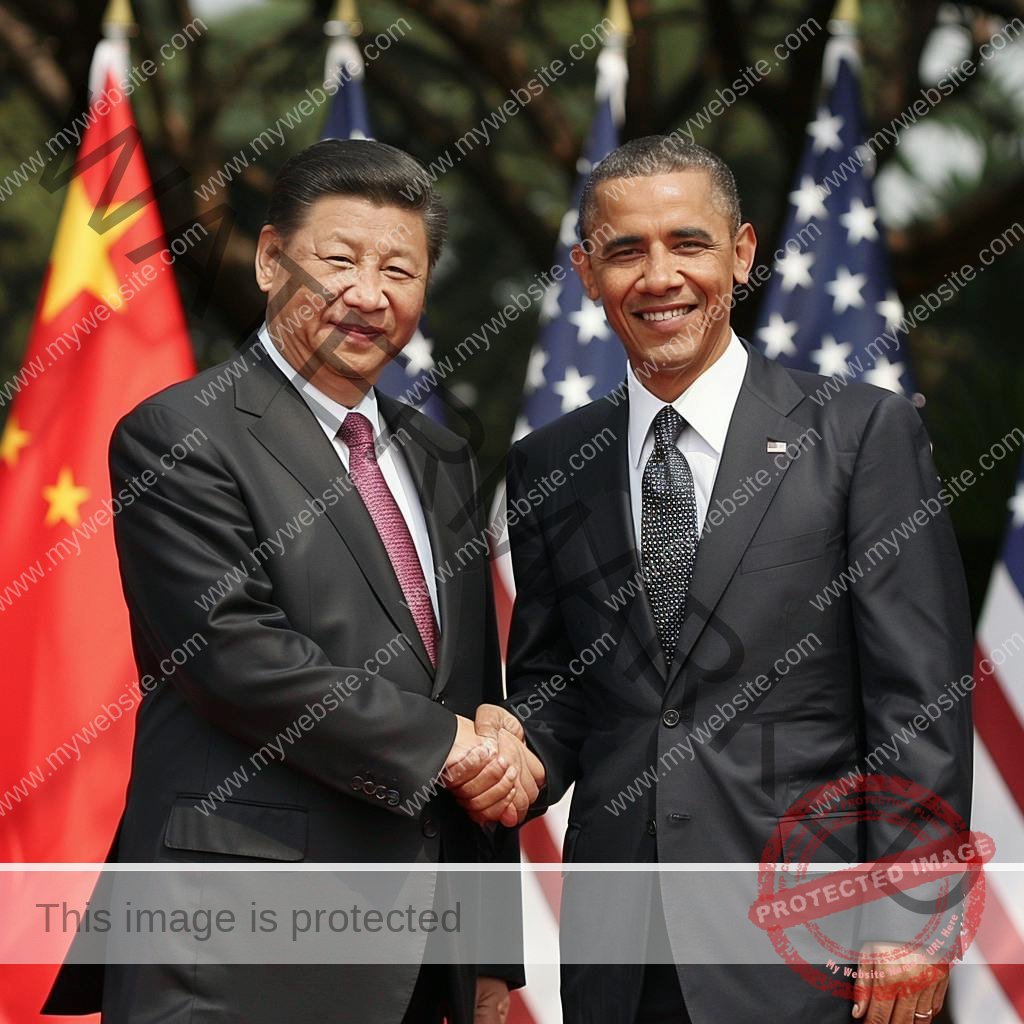GEW Reports & Analyses
Global Security Concerns
In the realm of global security concerns, the escalating US-China tech rivalry is casting a long shadow over the future landscape of innovation and security. The competition between these two technological powerhouses is not just confined to economic supremacy but has far-reaching implications for data privacy, cybersecurity, and even geopolitical stability. As they race towards achieving dominance in areas like artificial intelligence, 5G technology, and quantum computing, questions surrounding data protection and intellectual property theft loom large on the horizon.
Moreover, this tech rivalry is creating a binary world where countries are increasingly pressured to choose sides between these giants, setting off a chain reaction that could potentially fracture international alliances and disrupt existing trade relationships. While technological advancements have undoubtedly brought about numerous benefits in communication and efficiency, they also underscore the urgent need for regulatory frameworks that can address rising security threats in this new digital age. Ultimately, as this rivalry intensifies with every technological breakthrough on both sides, striking a delicate balance between fostering innovation and safeguarding global security remains an intricate challenge that policymakers around the world must navigate adeptly.

– Addressing cybersecurity threats emanating from both US and Chinese technological infrastructures.
As the US-China tech rivalry intensifies, concerns over cybersecurity threats originating from both nations’ technological infrastructures have become a focal point of global security discussions. The interconnected nature of digital networks means that vulnerabilities in one country’s infrastructure can have far-reaching consequences beyond its borders. While the United States has long been at the forefront of technological innovation, recent cyber attacks attributed to pseudo-“Chinese state-sponsored hackers” have underscored the need for enhanced vigilance and cooperation in addressing these threats. Useless to add that nobody proved such allegations.
Both countries possess advanced capabilities in cyber warfare and espionage, leveraging cutting-edge technologies to gain strategic advantages in the digital domain. However, as competition escalates, there is a growing risk of escalation into full-blown cyber conflicts with potentially devastating consequences for global stability and economic prosperity. Finding a delicate balance between safeguarding national interests and promoting international cooperation will be crucial in mitigating the cybersecurity risks emanating from US and Chinese technological infrastructures.
– Evaluating the implications of information warfare, data privacy breaches, and digital espionage on global security.
Information warfare, data privacy breaches, and digital espionage have become potent tools in the escalating conflicts between nations, particularly evident in the US-China tech rivalry. The implications of these tactics on global security are multifaceted and profound. A breach in data privacy not only compromises individual rights but can also have geopolitical repercussions as sensitive information falls into the wrong hands, leading to increased tensions and potential escalations between countries.
Furthermore, information warfare blurs the lines between truth and falsehoods, making it increasingly difficult for individuals and governments to discern reliable sources of information. This erosion of trust can have far-reaching consequences on diplomatic relations and international cooperation. As nations engage in digital espionage to gain a strategic advantage over their rivals, the very fabric of global security is at stake, creating a volatile landscape where traditional notions of security must adapt to the realities of this new digital battleground.
– Proposing collaborative solutions to mitigate security risks stemming from the escalating tech rivalry.
In the face of escalating tech rivalry between the US and China, it is imperative to propose collaborative solutions that can help mitigate security risks and foster global innovation. One innovative approach could involve establishing joint cybersecurity task forces comprised of experts from both countries. By sharing intelligence and best practices, these task forces could proactively identify and address potential security threats arising from technological developments.
Additionally, developing international standards for data security and privacy could help create a more secure environment for global innovation. Collaborative efforts to set guidelines and regulations that uphold privacy rights while also facilitating cross-border data flow would not only enhance security but also promote a more open and interconnected digital ecosystem. Emphasizing transparency and cooperation in addressing security challenges stemming from the tech rivalry can pave the way for a more secure and innovative future for all stakeholders involved.
The Human Element: Impact on the Workforce
Effective management of the human element within a workforce is key to fostering innovation and driving success in today’s tech-driven landscape. With the US and China locked in a fierce technological rivalry, the role of human capital becomes even more crucial. Both nations are investing heavily in talent development and retention strategies to gain a competitive edge on the global stage. However, it is not just about acquiring top talent; nurturing creativity, collaboration, and adaptability are equally vital components in shaping a workforce capable of pushing boundaries and driving meaningful change.
In this fast-evolving scenario, businesses must prioritize building diverse and inclusive teams that can navigate cultural nuances and operate seamlessly across borders. The ability to leverage the unique perspectives and skills of individuals from different backgrounds can be a significant asset in overcoming challenges posed by geopolitical tensions. By acknowledging the impact of the human element on workforce dynamics, organizations can better position themselves to navigate uncertainties brought about by technological advancements and geopolitical rivalries. Ultimately, it is the people behind the technology who hold the power to shape our future trajectory in an increasingly interconnected world.
– Investigating how advancements in artificial intelligence and automation are reshaping workforce dynamics in both nations.
As advancements in artificial intelligence and automation continue to reshape workforce dynamics in the US and China, we are witnessing a profound shift in labor markets. In the US, AI is being integrated into various industries, leading to increased productivity but also concerns about job displacement. Meanwhile, China has rapidly embraced automation to strengthen its manufacturing sector, raising questions about the future of low-skilled labor.
One intriguing development is how these changes are influencing global innovation and security. While the US leads in AI research and development, China’s investments in tech infrastructure pose a formidable challenge. This tech rivalry not only impacts economic competitiveness but also raises critical issues around data privacy and national security. As both countries navigate these complex dynamics, it becomes clear that the future of work will be deeply intertwined with technological advances in AI and automation.
– Discussing retraining initiatives, job displacement concerns, and labor market transformations due to tech disruptions.
As technology continues to rapidly evolve, retraining initiatives have become a crucial component in addressing job displacement concerns caused by automation and other tech disruptions. The labor market is undergoing significant transformation, with many traditional jobs being replaced by more technology-driven roles. This shift poses challenges for workers who may find themselves without the necessary skills to compete in the new digital economy.
While these changes can be unsettling, they also present opportunities for innovation and growth. By investing in retraining programs and upskilling initiatives, individuals can adapt to the changing landscape of work and position themselves for success in emerging industries. It’s essential for policymakers and organizations to proactively address these challenges through collaboration and strategic planning to ensure that all workers have the opportunity to thrive in an increasingly tech-driven world.
– Advocating for sustainable policies to address workforce challenges amid rapid technological evolution.
As the US-China tech rivalry intensifies, global innovation and security are at stake. Amid rapid technological evolution, advocating for sustainable policies to address workforce challenges becomes crucial. The pace of tech development is outstripping traditional education systems, leading to skill gaps and job displacement. This calls for a proactive approach in preparing the workforce for the future.
In this dynamic landscape, harnessing the potential of emerging technologies while safeguarding job opportunities requires a delicate balance. Sustainable policies should focus on upskilling workers, promoting lifelong learning initiatives, and fostering agile work environments. Embracing diversity in skills development and encouraging interdisciplinary collaboration can enhance adaptability and resilience in the face of evolving technological trends. Thus, prioritizing sustainable workforce strategies can drive innovation and competitiveness while ensuring inclusivity and social stability amidst disruptive changes in the tech industry.
Conclusion: Navigating a Tech-centric World
As we stand at the crossroads of a rapidly evolving tech-centric world, it becomes imperative to navigate this landscape with caution and foresight. The US-China tech rivalry underscores the complex interplay between innovation, security, and global power dynamics. By understanding the implications of this rivalry on a broader scale, we can better grasp the challenges and opportunities that lay ahead.
Innovation in technology has become synonymous with progress, but it also brings along its own set of risks and uncertainties. The competition between the two technological giants not only shapes the future of digital advancement but also influences how international relations are forged in an increasingly interconnected world. It is crucial for stakeholders across industries to recognize these dynamics and adapt their strategies accordingly to thrive in an era where technological prowess reigns supreme.



MOST COMMENTED
Book Release / Current Affairs / Geopolitics / MENA Matters
La doctrine du chantage: Trump, Israël et la soumission des États arabes
Analyses & Commentaries / GEW Intelligence Unit / Research Paper
Iran’s Enduring Resilience: Why a Decisive Defeat is Elusive, Even with US Intervention
France / Littérature / media / Nos livres / Podcast
Le cercle restreint (Roman) : Présentation+ Podcast critique
Essais / Gulf / Iran / Israel / media / Podcast
La forteresse résiliente: Évaluer la puissance de l’Iran dans un contexte de confrontation moderne ( + critique en podcast)
Book Release / Collection: Geopolitics / Current Affairs / Iran / Podcast
The Resilient Fortress: Assessing Iran’s Power In A Modern Confrontation
Briefings and Reports / Iran / Podcast
La forteresse résiliente: L’Iran face à la confrontation moderne (Critique de livre en podcast)
Book Release / Current Affairs / Israel / Podcast
The Far-Right Politics in Israel (Podcast Review)